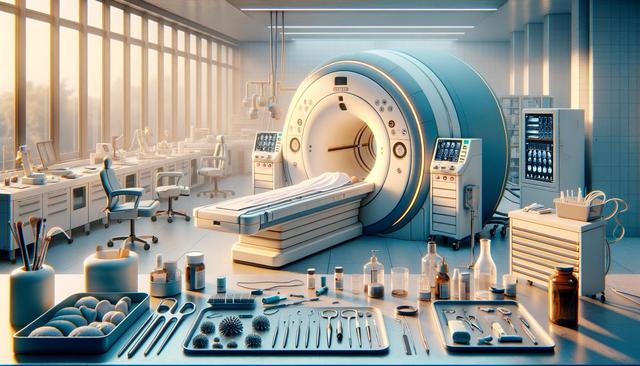Starting the Day: Preparation and Patient Care
For many MRI technicians, the workday begins early—often before the first patient arrives. The morning typically starts with checking the MRI equipment to ensure everything is functioning properly. Safety checks are essential, as the machine operates with powerful magnets. Room preparation, verifying patient schedules, and reviewing imaging requests from physicians are all part of the start-of-day routine.
Patient interaction is a central part of the job. Technicians greet patients, explain the procedure, and make them feel comfortable. Many individuals undergoing MRI scans experience anxiety, especially if it’s their first time. A calm, professional demeanor goes a long way. Before the scan begins, technicians must also verify the patient’s medical history and ensure there are no contraindications, such as metal implants or devices that are not MRI-compatible.
Being an MRI technician combines technical knowledge with compassionate care. Students who pursue an MRI Technician Course often learn that soft skills are just as essential as technical abilities. This balance makes the role both challenging and rewarding.
Working with Advanced Technology
Operating an MRI machine is not just about pressing buttons. It requires a deep understanding of anatomy, imaging protocols, and the physics behind magnetic resonance technology. MRI technicians are trained to position patients accurately, select appropriate scan settings, and capture high-quality images used for diagnosis.
Technicians often work closely with radiologists, ensuring that the images meet diagnostic standards. They must also monitor the patient throughout the scan, watching for signs of discomfort or movement that could affect image quality. Adjusting to different body types, medical conditions, and required scan areas is all part of the process.
Enrolling in a Technician Course through Online Trade Schools can be a convenient way for students to gain these skills. The combination of theoretical knowledge and practical training prepares aspiring MRI technicians for the technical demands of the job.
Teamwork and Collaboration in a Clinical Setting
While MRI technicians often work independently during scans, their role is deeply integrated within the broader healthcare team. They communicate regularly with doctors, nurses, and administrative staff to ensure that each patient receives timely and effective care. Collaboration is key, especially in busy hospital settings or outpatient clinics where multiple scans are scheduled back-to-back.
Tasks such as reviewing imaging protocols with physicians, coordinating patient flow with front-desk staff, and consulting with nurses about patient needs are common throughout the day. This dynamic environment requires strong organizational skills and the ability to multitask efficiently.
Technicians also play a role in maintaining accurate patient records and ensuring compliance with healthcare regulations. The teamwork aspect makes the job more engaging and reinforces the critical role technicians play in the diagnostic process.
Managing Challenges and Prioritizing Patient Safety
No two days are exactly alike for an MRI technician. Unexpected challenges can arise—equipment malfunctions, emergency scans, or patients with special needs. In such cases, quick thinking and adaptability are essential. Ensuring patient safety remains the top priority, whether that means communicating clearly about the importance of remaining still or responding to a claustrophobic patient’s concerns with empathy.
Technicians are trained to handle these situations calmly and professionally. Their education often includes modules on safety protocols, emergency procedures, and patient communication strategies. Whether you’re in a 6 Month Auto Mechanic Course or an MRI Technician Course, safety and precision are emphasized as core values in any technical profession.
Learning how to manage both the technical and human aspects of the role is what makes this career pathway particularly unique in the healthcare field.
Why the MRI Technician Path is a Strategic Career Move
Choosing to become an MRI technician can be a strategic decision for those seeking a high-tech, stable, and people-oriented career. With healthcare continuing to evolve and expand, diagnostic imaging remains a critical component of patient care. The demand for skilled MRI technicians is projected to grow, offering job security and opportunities for advancement.
One of the major benefits of this career path is the relatively short time needed to enter the workforce. Many Online Trade Schools offer Technician Course options that provide the necessary education and certification within a year or two, allowing students to quickly transition into a professional role without spending years in traditional college settings.
Additionally, the work environment—ranging from hospitals and outpatient clinics to diagnostic centers—offers flexibility for different lifestyle preferences. The role also lends itself well to continued learning and specialization, opening doors to related fields like CT scanning or radiologic technology.
Conclusion: A Fulfilling Career that Merges Tech and Care
If you’re looking for a career that combines cutting-edge technology with meaningful patient interaction, becoming an MRI technician might be the perfect fit. This role offers a unique blend of science, service, and stability, making it an appealing option for those entering the healthcare field in 2025 and beyond.
Whether you’re just starting to explore Online Trade Schools or are comparing options like a 6 Month Auto Mechanic Course, it’s worth considering how a Technician Course in MRI can lead you into a rewarding and impactful profession. With the right training and a passion for helping others, you can build a future rooted in both innovation and care.



Leave a Reply